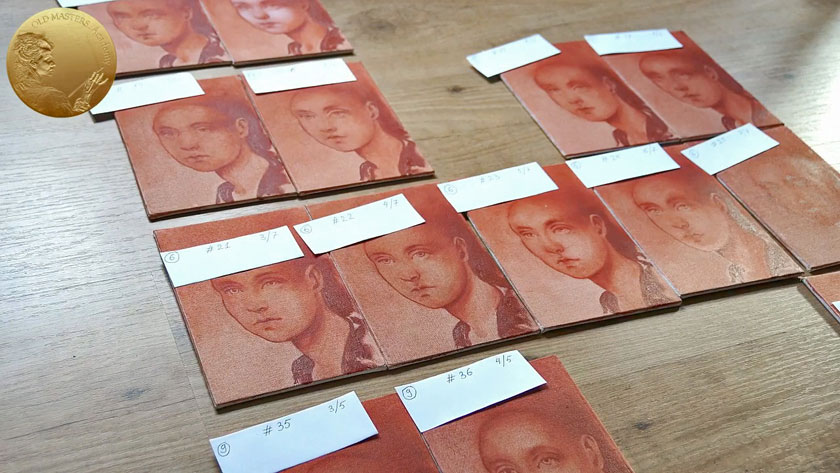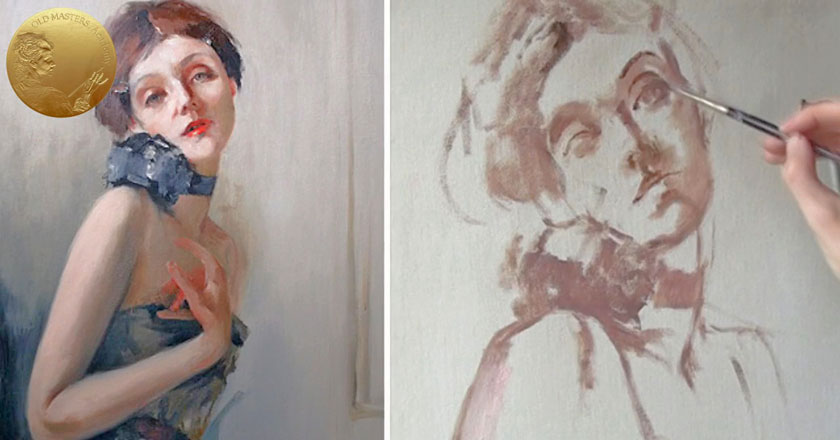Various Oil Painting Methods
Discover Underpainting – Brush Sketch Before Oil Painting
Learn how to paint like the Old Masters!
Old Masters Academy Online Course
Self-study, self-paced online video courseLifetime membershipOne-time payment: $487Enroll Now!Personal Tutoring online + Online Course
Unlimited tutoring by the Academy teachersLifetime membershipOne-time payment: $997Enroll Now!« Back to the Art Lessons List
Underpainting – Brush Sketch Before Oil Painting
We prepared a Brush Sketch that outlines the portrait, so when we start the painting process we can concentrate not on constructing the shape and proportions of the portrait, but on the Color and creation of the picturesque effects of the painting.

We can do a Brush Sketch in different ways – for example, we can make the sketch freely, with loose brushstrokes, like in this example; or, we can make a slight Underdrawing. It’s up to you. I decided to draw an outline first because I have to keep all exercises identical; otherwise, I would do a Brush Sketch without any Underdrawing.

We have to follow the “Fat over Lean” rule. That’s why our first layers of paint should be thinned with volatile mediums, such as Turpentine or White Spirit. First of all – we outline the Underdrawing with paint (it’s Venetian Red). For that, we need a small round Brush. It could be Brush #0, or #00, depending on the brand. I wouldn’t rely on these size numbers – brushes by different brands can look similar in size but in reality be numbered differently. Such small brushes are good for painting lines and doing detailed painting.
The wider the area we need to cover, the wider the brush should be. You will logically feel what kind of brush size should be chosen.

After we outline the main face characteristics, we can proceed with the Sketch by diluting the paint with more Turpentine and spreading the paint in a thin, watercolor-like wash.
We can also rub the Brush over our outlines – the lines will become diffused and soft. You see that such a layer of diluted paint is very manageable while it’s freshly applied, and you can easily remove the excess paint with the paper tissue or with the brush.
So, in this way we combine those two actions, outlining the facial features with a small brush and spreading the paint with a bigger Hog Brush; we do this till the moment we are satisfied with our Brush Sketch.
The Sketch should not necessarily be executed in the details and look as completed as the finished painting will do, only monochromatically. Not at all. It can be even more generalized than this one. It just should give us a hint of the portrait construction.




